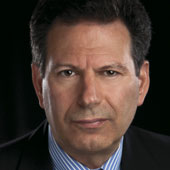Romania Rediscovered
Will Romania be able to digest its rapid adaption of capitalism with most of country still in poverty?
August 18, 2001
Suddenly, the featureless plain filled with cardboard and scrap-metal squatters’ settlements. They were as awful as many I had seen in Africa, Asia and Latin America. Then I saw unpainted cement-block houses with laundry drying on lines and the occasional satellite dish: These were the northwest suburbs of Bucharest, Romania’s capital.
At the station, taxi drivers assaulted me. One had his arm on mine, another on my duffle bag. I knew that the proper fare to my friend’s apartment downtown was 15,000 lei, about $2. I insisted that the driver use the meter. He did, but he had rigged it. The fare came to the equivalent of $5.50.
The transformation of this formerly forbidden Cold War Stalinist city, which I had not seen since shortly after the Berlin Wall fell, amazed me.
In place of the terrified urban peasantry I remembered from my visits in the 1980s, I found a downtown comprised of the latest Italian fashions and hairstyles, cell phones, casinos, private exchange dealers and sidewalk stands selling books and compact disks — everything from Mein Kampf in Romanian to Israeli pop music, with an emphasis on computer and management books.
I saw young couples embrace passionately on the sidewalks. Topless clubs were ubiquitous, and Mexican soap operas dominated the 30 television channels, including cable. As in Paris and New York, black apparel was chic. Some boutiques featured live models in the windows.
Drafty restaurants offering the Communist-era fare of greasy pork cutlets and plum brandy still operated, but they had been surpassed in popularity by intimate establishments, often with only a few tables, run by young people and offering a more wholesome, international cuisine.
There were cell phones everywhere, whose beeping filled the cafés: the perfect accessory item for hustler economies with weak hard-wired infrastructures. Western diplomats suspect that some of the casinos here in Bucharest launder money for organized crime and the drug trade.
“There are no limits with the nouveaux riches here,” Ioana Ieronim, a poet and former diplomat, told me at dinner. “This is how we were in the interwar period, in the 1930s.”
“We are resourceful, adaptable, exaggerated, pseudo-cosmopolitan émigrés in a new, global world. We are one-dimensional Latin-Oriental clones of the West. Because of an outburst of freedom, there is a crassness and directness here that you won’t find among the French or Italians, whom we superficially resemble.”
But this new consumer class is limited mainly to a few districts of Bucharest, a city of 2 million in a country of 23 million. It stands in contrast to the squatter settlements and a mass of rural peasantry. Romanians are, in effect, adapting to global capitalism in the same aggressive manner that they had once adapted to fascism and, later, communism.
While its tiger economy was taking Hungary from the Communist “Second World” to the Western “First,” Romania seemed to be drifting from the Second to the Third World: Romania’s annual per capita income in 1997 was $1,500; Hungary’s was nearly $4,500.
Read previous
Opening Germany to the World
August 17, 2001
